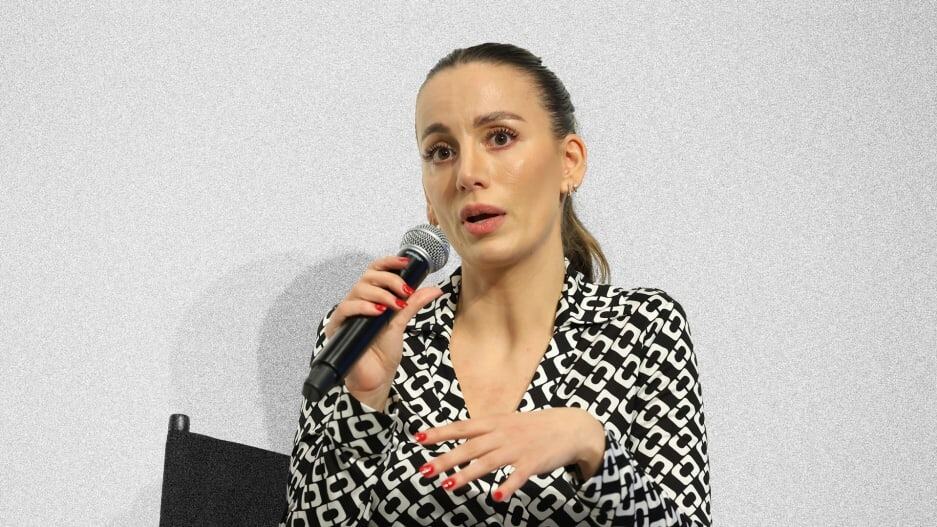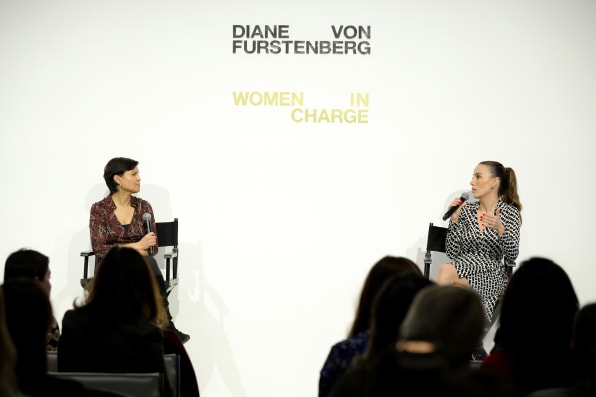- | 11:00 am
‘It’s going to transform all of our lives’: OpenAI’s CTO on how AI is remaking society
Six insights from Mira Murati, chief technology officer of OpenAI, on the impact of generative AI.

Generative AI leapt from research labs to users’ hands over the past several months, spurred by the November launch of ChatGPT from San Francisco-based OpenAI, which is also behind the breakout image-generating tool Dall-E and Microsoft Bing’s chat integration.
OpenAI’s chief technology officer Mira Murati has been the architect of the company’s strategy to release its AI products to the masses and make OpenAI’s large language models better by learning from user interactions. This novel approach is why OpenAI is the No. 1 company on Fast Company‘s list of the World’s Most Innovative Companies of 2023.
But Murati, in a conversation last week with Stephanie Mehta, CEO and chief content officer of Mansueto Ventures, Fast Company’s parent company, said there is another reason for OpenAI’s public push. “We bring [OpenAI’s models] to the public so that we can figure out early on—before they become extremely powerful—how to adapt to them.”
The need for society to adjust to the emergence of AI was a recurring theme in their conversation, which took place at the Diane von Furstenberg flagship store in Manhattan’s Meatpacking District for the designer’s Women in Charge summit.

“These are general technologies, and with the good comes the bad. There are going to be a ton of ways in which they’re misused. And there are a ton of limitations,” Murati acknowledged. “So there is certainly an element of society adapting to the technologies.”
AI has already become an integral part of many industries and fields, from manufacturing and logistics to radiology and drug discovery. But with the arrival of OpenAI’s tools—and the back-to-back announcements from such tech giants as Google, Facebook, and Baidu about their plans for similar systems—workers in creative fields and industries that seemed years away from being redefined by AI are now considering what happens next.
“I think there are going to be jobs that will be lost,” Murati said, when asked how AI might impact the future of work. “I think probably a lot of jobs that are repetitive, cognitive tasks that are repetitive, will be replaced by AI systems.”

But Murati also stressed that jobs will be created as a result of introducing AI into the real world. “We know that we need to guide the systems, and we need to teach them to do the things that we want them to do. So I suspect that there’s going to be jobs that are tied to teaching AI systems to be more useful and reliable to us.” She also envisions generative AI supporting human creativity, rather than replacing it: “I see the systems as really amplifying our own creativity by collaborating with us, collaborating in that initial process . . . that requires a lot of repetitive work. And then humans can focus more on the higher-level tasks.”
Murati highlighted, in particular, how transformative a system like ChatGPT can be in the classroom—despite the fact that many educators currently view the tool with suspicion. New York City Public Schools, the largest school district in the country, banned ChatGPT in early January to prevent cheating in the classroom. Murati sees more advanced versions of ChatGPT allowing for a very personalized approach to education, where individuals can ask questions and receive answers tailored to their backgrounds and learning styles. “You can ask questions about complex concepts and really interrogate the model and help it [to] help you learn better.” (In Fast Company’s recent cover story on OpenAI, Murati hinted that the company’s forthcoming launch of GPT-4, the next iteration of its large language model, would have an education partner.)
When it comes to figuring out acceptable uses for AI—as well as how to coordinate oversight and risk mitigation efforts—Murati said that she expects that the government, regulators, and companies such as hers will have to work together.
“I don’t think that we can or should rely on the private sector alone,” Murati said. “There is a combination of elements that come into play, and tight collaboration between private companies, governments, and regulators, as well as civil society.”
“This is very general technology,” she said, “and at the end of the day, it’s going to transform all of our lives.”








































